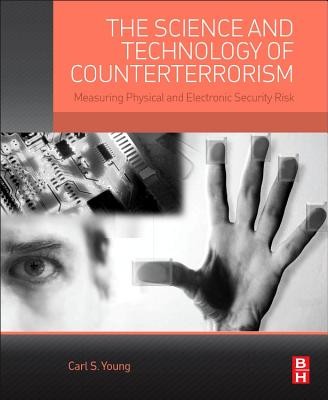
- We will send in 10–14 business days.
- Author: Carl Young
- Publisher: Butterworth-Heinemann
- ISBN-10: 0124200567
- ISBN-13: 9780124200562
- Format: 18.8 x 23.1 x 2.8 cm, softcover
- Language: English
- SAVE -10% with code: EXTRA
Reviews
Description
Scientists with little or no background in security and security professionals with little or no background in science and technology often have difficulty communicating in order to implement the best counterterrorism strategies. The Science and Technology of Counterterrorism offers the necessary theoretical foundation to address real-world terrorism scenarios, effectively bridging the gap. It provides a powerful security assessment methodology, coupled with counterterrorism strategies that are applicable to all terrorism attack vectors. These include biological, chemical, radiological, electromagnetic, explosive, and electronic or cyber attacks. In addition to rigorous estimates of threat vulnerabilities and the effectiveness of risk mitigation, it provides meaningful terrorism risk metrics.
The Science and Technology of Counterterrorism teaches the reader how to think about terrorism risk, and evaluates terrorism scenarios and counterterrorism technologies with sophistication punctuated by humor. Both students and security professionals will significantly benefit from the risk assessment methodologies and guidance on appropriate counterterrorism measures contained within this book.
EXTRA 10 % discount with code: EXTRA
The promotion ends in 20d.21:46:43
The discount code is valid when purchasing from 10 €. Discounts do not stack.
- Author: Carl Young
- Publisher: Butterworth-Heinemann
- ISBN-10: 0124200567
- ISBN-13: 9780124200562
- Format: 18.8 x 23.1 x 2.8 cm, softcover
- Language: English English
Scientists with little or no background in security and security professionals with little or no background in science and technology often have difficulty communicating in order to implement the best counterterrorism strategies. The Science and Technology of Counterterrorism offers the necessary theoretical foundation to address real-world terrorism scenarios, effectively bridging the gap. It provides a powerful security assessment methodology, coupled with counterterrorism strategies that are applicable to all terrorism attack vectors. These include biological, chemical, radiological, electromagnetic, explosive, and electronic or cyber attacks. In addition to rigorous estimates of threat vulnerabilities and the effectiveness of risk mitigation, it provides meaningful terrorism risk metrics.
The Science and Technology of Counterterrorism teaches the reader how to think about terrorism risk, and evaluates terrorism scenarios and counterterrorism technologies with sophistication punctuated by humor. Both students and security professionals will significantly benefit from the risk assessment methodologies and guidance on appropriate counterterrorism measures contained within this book.


Reviews